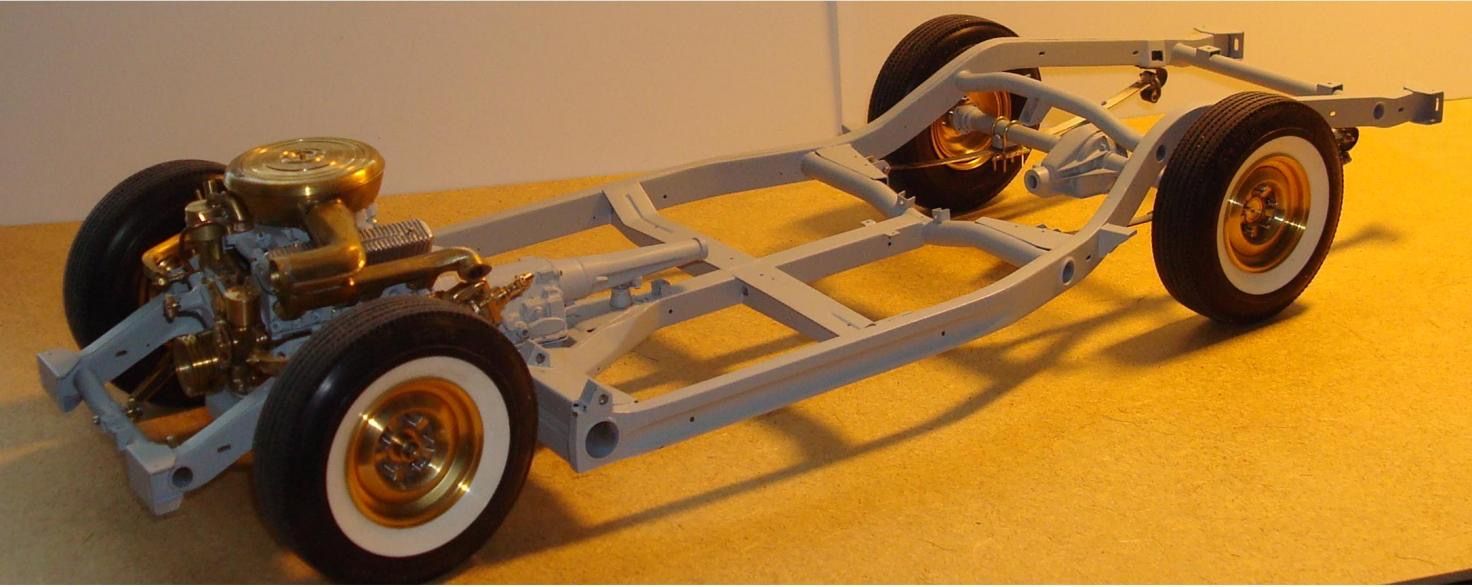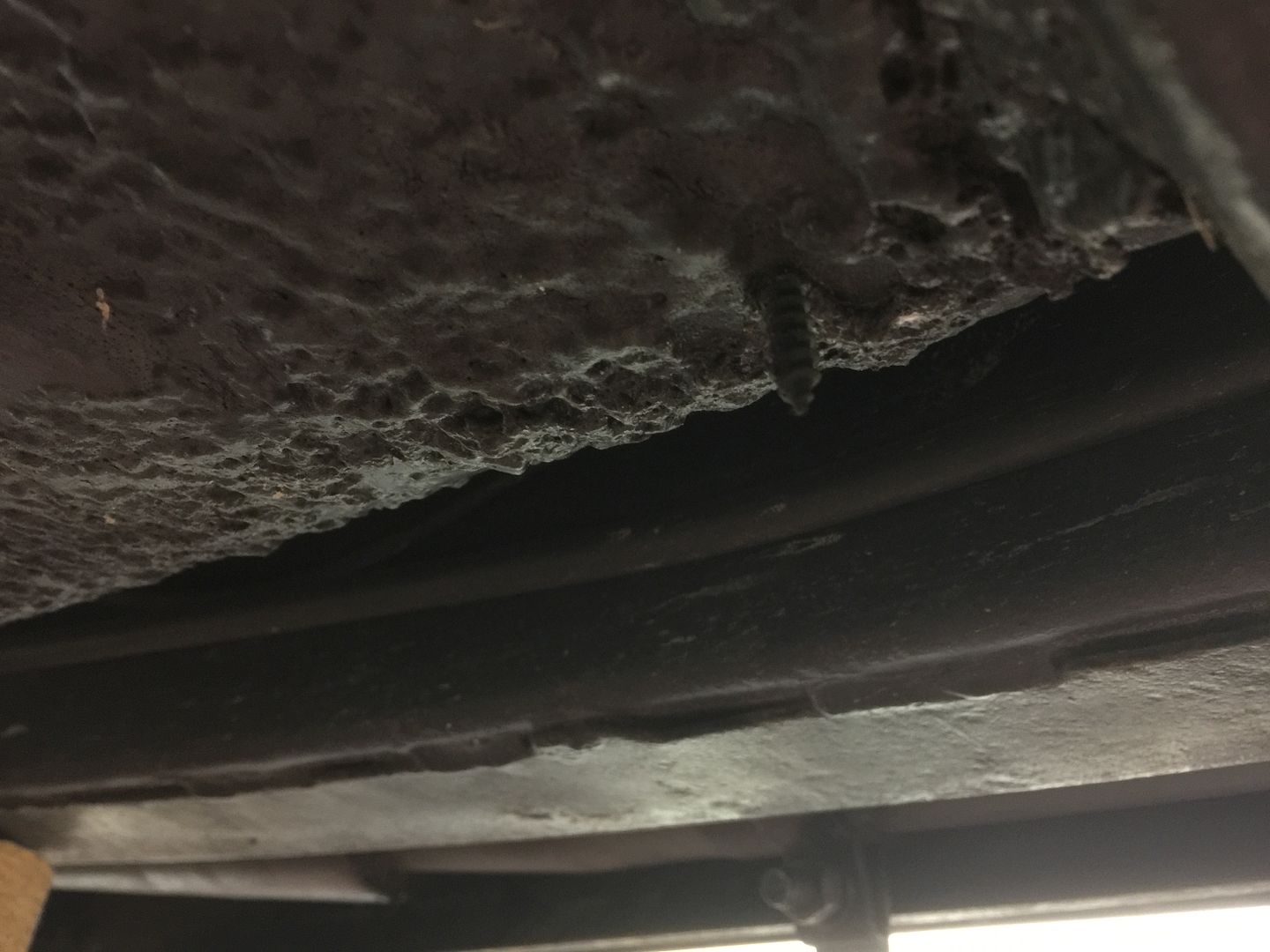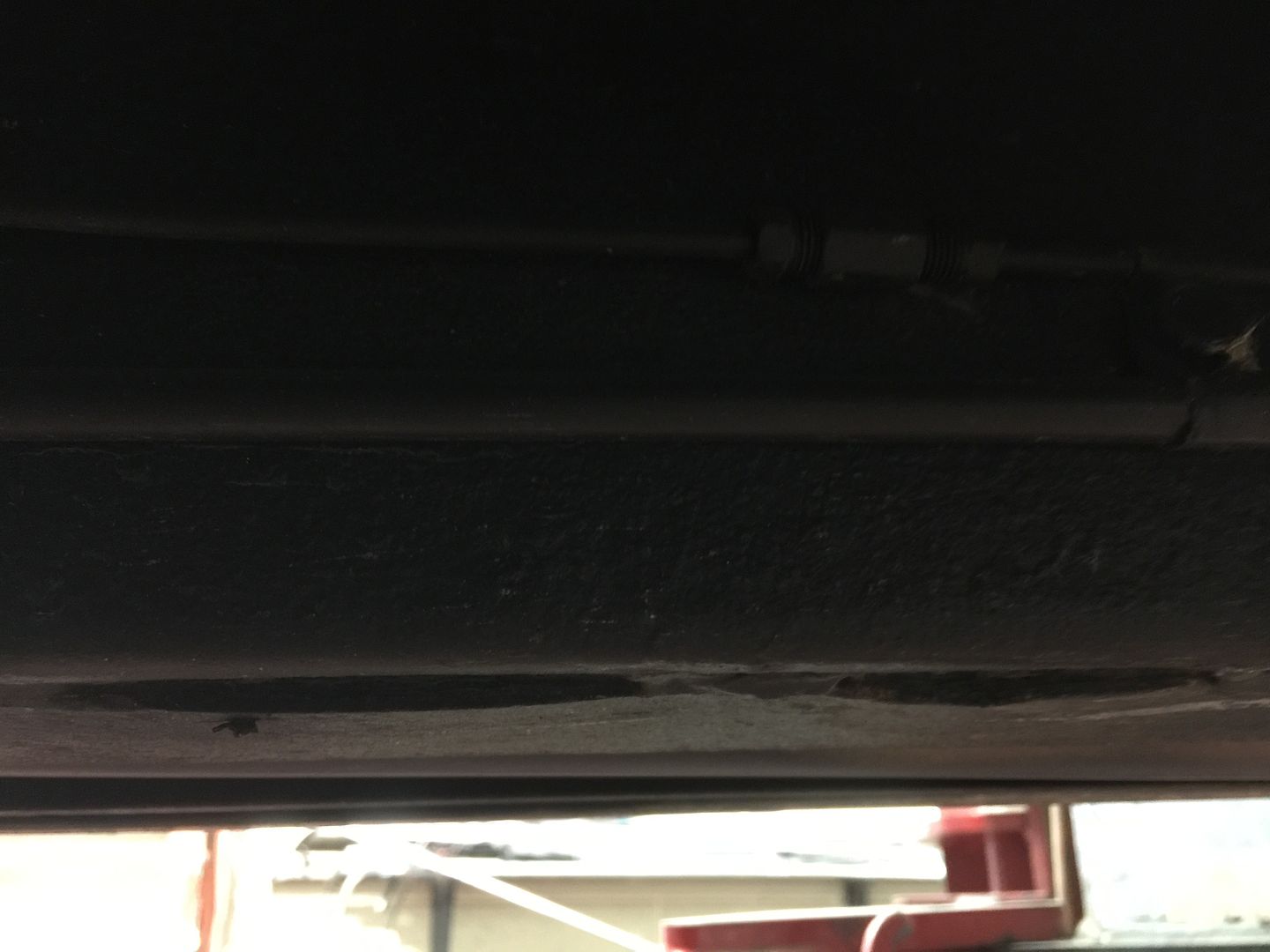While washing the chassis before reinstalling the engine and trans I found 3 tubular crossmembers with drain holes plugged completely with nesting material.
The front crossmember, behind the bumper, only has a slight dip to it, but it holds a considerable amount of water when the drain hole in the center is plugged.
The second crossmember, under the engine, was also plugged. Very little nesting material came out, mostly dried grass.
You might want to check the drain holes all over the chassis. In the lighting business for 40 years I've seen rust eat through 8 gauge steel and topple a 40-foot pole.
I also found that the core support has no drainage at all. This car has a rubber spacer that stops water from exiting out the elongated holes that hold the core support, which carries the entire weight of the sheetmetal and grill of the front end. This is where you adjust front fender to door gaps. If these bolts have been tightened too much or the rubber has lost its shape you might want to check this, and the drain holes all over the chassis. I'll see if I can chart them.
I just gave the water someplace to go with a 1/4" hole on either side of the support bolts. Something we did to every light fixture we installed over 40 years. You can't keep water out, you simply have to give it someplace to go.





 Reply With Quote
Reply With Quote


